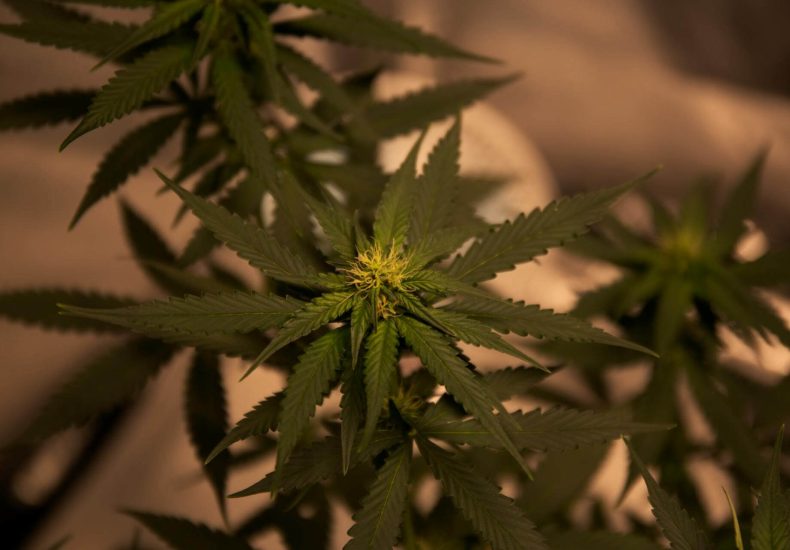
- May 1, 2024
- 656 Views
Table of Contents
The effects of cannabis on our body’s endocannabinoid system are only just being realized. Cannabis has been a subject of fascination, controversy, and research for centuries. While its psychoactive properties and recreational use have dominated public discourse, the medicinal potential of cannabis has been a topic of growing interest in recent years.
One of the key areas of investigation is how cannabis interacts with the human body, particularly the endocannabinoid system (ECS), a complex network of receptors and signaling molecules. In this article, we will explore the science behind cannabis and its effects on the endocannabinoid system.

The Endocannabinoid System: A Brief Overview
Before diving into the effects of cannabis, it is crucial to understand the endocannabinoid system. The ECS is a remarkable regulatory system found in mammals, including humans. Its primary function is to maintain homeostasis, a state of balance, within the body. The ECS consists of three main components:
- Endocannabinoids: These are natural compounds produced by the body that interact with cannabinoid receptors. Two prominent endocannabinoids are anandamide and 2-arachidonoylglycerol (2-AG).
- Cannabinoid Receptors: There are two primary types of cannabinoid receptors: CB1 and CB2. CB1 receptors are mainly located in the brain and central nervous system, while CB2 receptors are primarily found in the immune system and peripheral tissues.
- Enzymes: Enzymes are responsible for the breakdown and synthesis of endocannabinoids. Two key enzymes involved in this process are fatty acid amide hydrolase (FAAH), which breaks down anandamide, and monoacylglycerol lipase (MAGL), which breaks down 2-AG.
The ECS plays a pivotal role in regulating various physiological processes, including pain perception, mood, appetite, immune response, and more. It achieves this by modulating the release of neurotransmitters and maintaining equilibrium in the body.
The Role of Cannabinoids
Cannabis contains over 100 different compounds known as cannabinoids. The two most well-known cannabinoids are delta-9-tetrahydrocannabinol (THC) and cannabidiol (CBD). These cannabinoids interact with the endocannabinoid system in unique ways, leading to diverse effects on the body and mind.
- Delta-9-Tetrahydrocannabinol (THC):
- THC is the primary psychoactive compound in cannabis responsible for the “high” or euphoric sensation.
- It binds strongly to CB1 receptors in the brain, mimicking the actions of endocannabinoids.
- This binding leads to altered perception, mood, and cognition, explaining the recreational use of cannabis.
- Cannabidiol (CBD):
- CBD is non-psychoactive and does not produce a high.
- It has a more complex interaction with the ECS, indirectly influencing cannabinoid receptors.
- CBD may have potential therapeutic benefits, including pain relief, anxiety reduction, and anti-inflammatory effects.

The Endocannabinoid System and its Response to Cannabis
When a person consumes cannabis, the cannabinoids within the plant interact with the endocannabinoid system, primarily by binding to cannabinoid receptors. Here’s how this interaction unfolds:
- THC and CB1 Receptors: THC, being structurally similar to anandamide, can bind to CB1 receptors with a high affinity. This results in the activation of CB1 receptors in the brain, leading to the characteristic psychoactive effects of cannabis.
- CB2 Receptors: While CB1 receptors are predominantly found in the central nervous system, CB2 receptors are mainly located in immune cells and peripheral tissues. Some cannabinoids, including CBD, can interact with CB2 receptors, potentially influencing immune response and inflammation regulation.
- Modulation of Neurotransmitters: THC, by activating CB1 receptors in the brain, modulates the release of neurotransmitters such as dopamine and serotonin. This modulation contributes to the feelings of relaxation, euphoria, and altered perception associated with cannabis use.
- Anandamide and 2-AG: Cannabis can also impact the endocannabinoid system by affecting the levels of endocannabinoids like anandamide and 2-AG. THC can mimic the actions of anandamide, leading to prolonged activation of CB1 receptors.
The Entourage Effect
One fascinating aspect of cannabis is the entourage effect, which suggests that the various compounds within the plant, including cannabinoids, terpenes, and flavonoids, work together synergistically to produce a more significant effect than any single compound alone.
For example, terpenes are aromatic compounds found in cannabis that contribute to its distinctive flavors and scents. Some terpenes, such as myrcene and limonene, have been shown to have potential therapeutic properties. When combined with cannabinoids like CBD, these terpenes may enhance the therapeutic benefits of cannabis.
This concept has prompted researchers and medical professionals to explore whole-plant cannabis extracts and formulations that preserve the natural synergy of compounds found in the plant.
Medicinal Potential and Clinical Applications
Cannabis has shown promise in various medical applications, primarily due to its interaction with the endocannabinoid system. Some areas of medicinal use and ongoing research include:
- Pain Management: Cannabis, particularly CBD and THC, has been investigated for its potential to alleviate chronic pain, neuropathic pain, and pain associated with conditions like multiple sclerosis and cancer.
- Epilepsy: Epidiolex, a CBD-based medication, has been approved by the U.S. Food and Drug Administration (FDA) to treat rare forms of epilepsy, demonstrating the therapeutic potential of cannabinoids.
- Mental Health: Research suggests that cannabis compounds may help in managing anxiety, depression, and post-traumatic stress disorder (PTSD).
- Anti-inflammatory Effects: CBD has shown promise in reducing inflammation, making it a potential candidate for conditions like arthritis and inflammatory bowel disease.
- Nausea and Vomiting: THC has been used to alleviate nausea and vomiting in cancer patients undergoing chemotherapy.
- Neuroprotection: Some studies indicate that cannabinoids may have neuroprotective properties, potentially benefiting conditions like Alzheimer’s disease.
- Appetite Regulation: THC’s ability to stimulate appetite has been beneficial for patients with conditions causing severe weight loss.
While there is promising research in these areas, it is essential to note that cannabis’s legal status varies by country and region, which can impact access to these potential treatments.
The Future of Cannabis Research
As the scientific community continues to delve into the complexities of cannabis and the endocannabinoid system, we can expect several exciting developments in the future:
- Personalized Medicine: Researchers are exploring how genetics and individual variations in the endocannabinoid system may influence responses to cannabis, paving the way for personalized treatment plans.
- Isolated Compounds: Scientists are working on isolating specific cannabis compounds to develop targeted medications with fewer side effects and a more predictable therapeutic profile.
- New Delivery Methods: Innovations in cannabis delivery methods, such as transdermal patches, nasal sprays, and controlled-release formulations, aim to improve precision and consistency in dosing.
- Regulation and Legalization: Changes in cannabis regulations worldwide may facilitate further research, allowing for more extensive clinical trials and scientific exploration.
Final Thoughts of Cannabis and the Endocannabinoid System
In conclusion, the science behind cannabis and its effects on the endocannabinoid system is a rapidly evolving field with profound implications for medicine and our understanding of human physiology. While cannabis holds significant promise for various medical conditions, it is crucial to approach its use with caution, especially in regions where its legal status is still evolving.
As research continues, we can expect a deeper understanding of how cannabis interacts with our bodies and how it can be harnessed for therapeutic purposes while minimizing potential risks.



